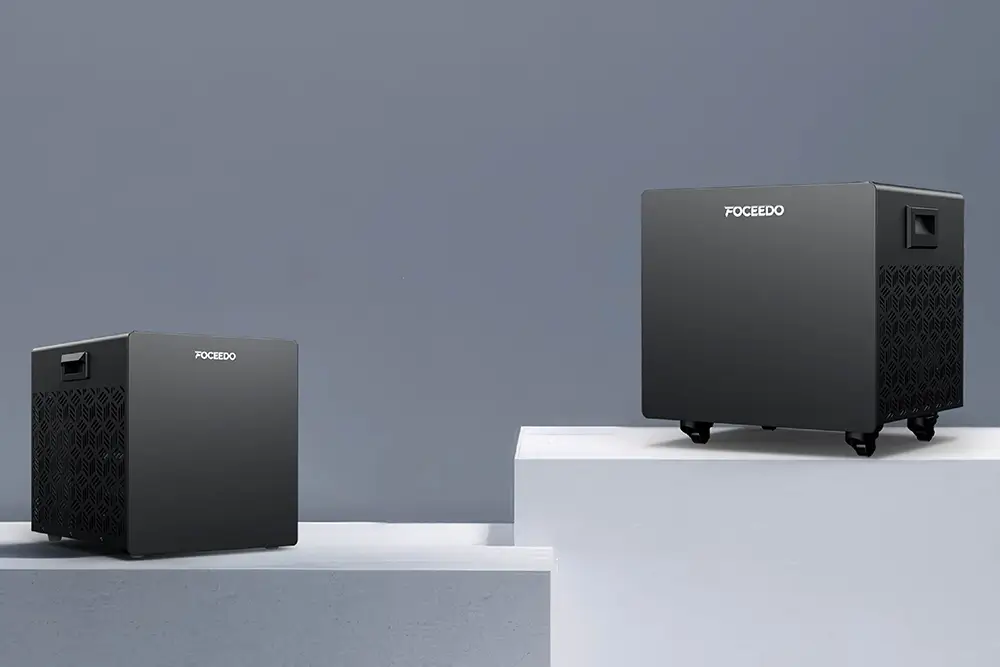
What is an Ice Bath Machine?
An ice bath machine is a device that can rapidly cool water and keep it at a constant low temperature. Think of it as a “refrigerator for your tub”, giving you a ready supply of cold water for therapy anytime.
Compared with adding bags of ice into a tub, an ice bath machine is more convenient, consistent, and hygienic.
Key Hardware Components
- Compressor (the heart) – Removes heat from the water.
- Condenser (the radiator) – Releases that heat into the air.
- Evaporator (water chiller) – Absorbs heat from the water, making it cold.
- Pump and piping (circulation system) – Keeps the cold water moving so the temperature stays even.
- Sensors and controller (the brain) – Monitors and maintains the temperature you set.
- Outer shell and insulation (the body) – Protects the unit and reduces heat loss.
Refrigerants: The Invisible Hero
Refrigerants are special fluids inside the machine that “carry heat away.”
- R290 (Propane) – Highly efficient and very eco-friendly (low GWP ≈ 3), but flammable, so it requires strict safety design.
- R32 – Widely used in air conditioners, stable performance, mildly flammable (A2L class).
The choice of refrigerant affects the efficiency, environmental impact, and safety of the ice bath machine. Reliable manufacturers use refrigerants that meet international safety standards.
Filtration and Cleaning: Ensuring Water Quality
An ice bath machine not only keeps water cold but also keeps it clean:
- Circulation filtration – Built-in filters remove hair and particles. Some models can circulate and filter the entire tub every 10–15 minutes.
- Sanitization – Premium units may add UV or ozone systems to kill bacteria and extend water freshness.
- Easy maintenance – Filters can be rinsed or replaced, and the tub should be cleaned regularly with mild cleaners.
For users, this means safer, cleaner water and less frequent water changes.
How Does an Ice Bath Machine Work?
- Cooling cycle: The compressor circulates refrigerant, which absorbs heat from the water and releases it into the air.
- Water circulation: The pump moves water through the cooling system and back into the tub, ensuring even temperature.
- Temperature control: Sensors monitor water temperature; the system automatically keeps it at your target (e.g., 10 °C).
- Safety protection: Prevents water from freezing, includes leak protection and alarms for safe operation.
- Filtration during operation: While cooling, the water is also filtered and disinfected, keeping it fresh and hygienic.
Benefits of an Ice Bath Machine
- Faster recovery – Helps reduce soreness and inflammation after workouts.
- More convenient – No need to buy or haul ice, the machine does it automatically.
- Comfortable experience – Stable water temperature, no sudden shocks.
- Cleaner water – Built-in filtration and disinfection keep water safe.
- Cost-effective – Power use is similar to a small fridge, cheaper than buying ice daily.
Who Should Use It?
- Athletes and fitness enthusiasts
- Gyms and sports clubs
- Rehabilitation and physiotherapy centers
- Families who enjoy cold water immersion
Frequently Asked Questions (FAQ)
1.How cold can it go?
Most home units can cool water to 3–5 °C, which is ideal for cold therapy.
2.Does it use a lot of electricity?
Power consumption is similar to a small fridge or portable AC.
3.Is it safe?
Yes, most machines include leakage protection and temperature safety controls.
4.How often do I need to change the water?
With filtration and sanitization, water can last longer, but it’s still recommended to change it regularly.
5.Why is it better than adding ice?
It’s more consistent, hygienic, and convenient—plus cheaper in the long run.
Conclusion
It’s a specialized device that combines a refrigeration system, water circulation, refrigerant, filtration, and smart controls, making cold therapy easy, safe, and effective.
Compared with the traditional “bucket of ice,” an ice bath machine offers stable temperature, better hygiene, and everyday convenience, making it the modern choice for recovery and wellness.
